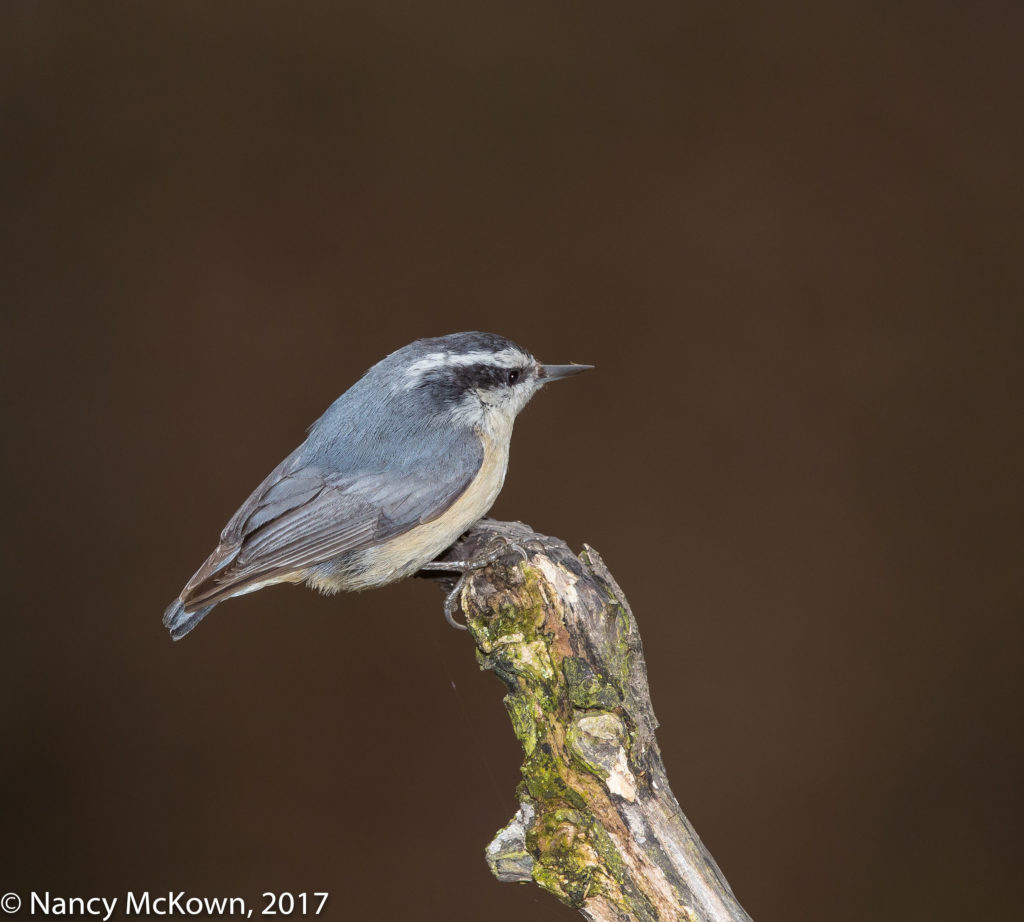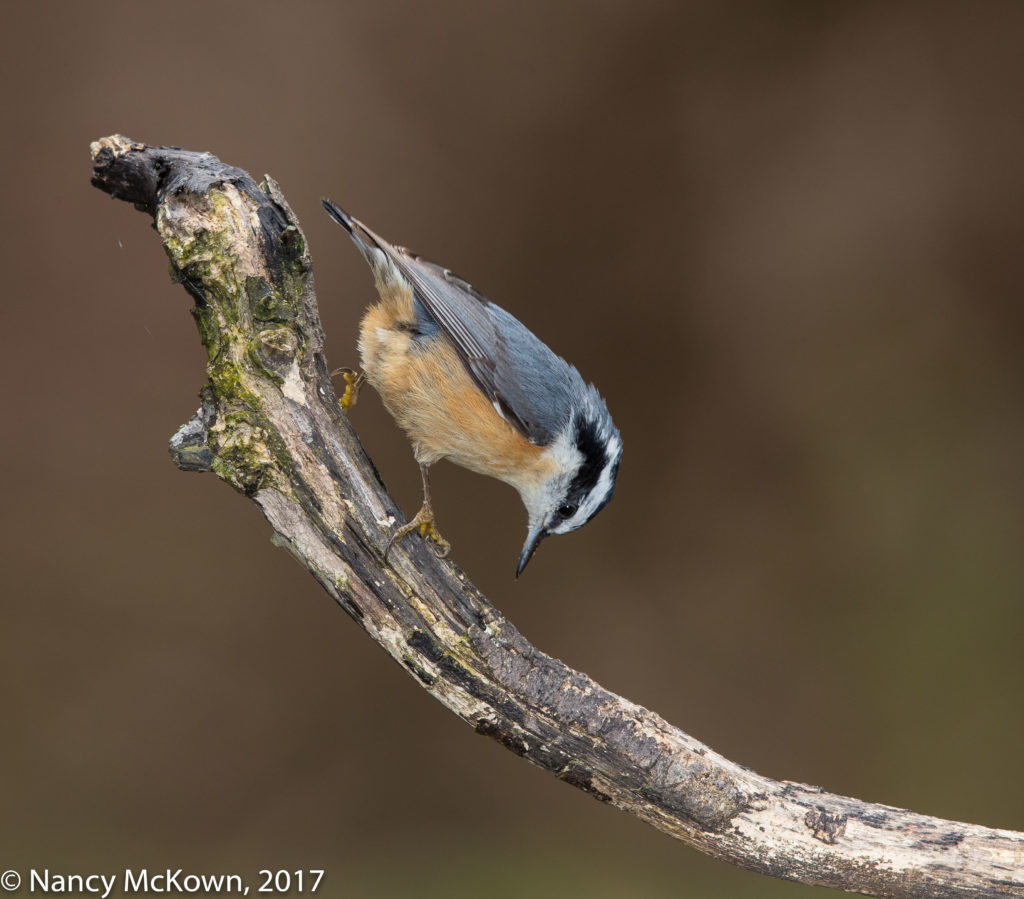Photographing a Red Breasted Nuthatch
I search out Red Breasted Nuthatches when I’m birding. Tiny, gregarious, and bold birds, they seem to always pause, like they are formulating a plan before they rush off. Gives me that moment I need to get a focus fix. Last summer, we had a pair that stayed in our yard to nest. So far this Spring, we have spotted two of these nuthatches. Sadly, they seem to be only passing through.

on Oversized Perch
With Dark Background
Taken With Flash Enhancement
ISO 400; f/9; 1/250 Second
Collecting Perches
I often venture out into the woods to collect moss and lichen coated pieces of deadwood, drag them back to our property, prop them up near the library windows and hope the birds will use them as a perch. It’s not hard to strategically arrange these perches against the forest of trees that surround our yard. Sometimes, I have to twist and turn the camera and tripod (left, right, up, down) to build the perfect vantage point from which to shoot.
This photo shoot took place in early evening under a cloud covered sky. Ambient light provided some illumination to the perch, but very little into the woods beyond. (As the season progresses and the trees fill with leaves, less and less sun penetrates these woods.)
As I was lugging this burly piece of deadwood, it occurred to me that it was oversized for most of the birds in the yard- and might cause the perching bird image to appear unbalanced in the frame. I used it anyway because I liked its character…. the texture, color, shape, peeling sides, notches and curves. Plus its very heftiness would give it some stability in the wind.

More Light Creeped in.
Some Indistinct Green Hues Blend With
the Dark Brown.
ISO400; f/9; 1/250 Second
Movement Caused By the Wind
Birds don’t seem to mind the swinging copper, aluminum, bamboo and wood chimes in our yard that resonate with the wind. This music portends that the camera will likely record swirling background patterns caused by movement within the distant woods and perhaps even little blotches of white and pink from the airborne blossom petals. This evening, I would just have to hope for a spot of calm when a bird alighted on my new perch.
Methods and Observations
- While a cluttered natural environment does give a sense of place, it also tends to distract the viewer from the bird and its perch. I was aiming for less distraction…a plain darkish background, no swirls or fancy colors, no playful bokeh, no indication of the twigs and branches protruding out.
- The subtleties of lighting (i.e. shadows and details) on your subject are much more apparent against a plain, dark background. For this shoot, I set the flashgun to Manual “M” so I could more efficiently control the light intensity and properly expose the subject but not the background. The most efficient way to darken an image background is by experimenting with the factors that you can control: 1) Flash intensity….The stronger the flash blast, the more likely the light will travel past the subject. 2) Subject and background distance….the wider the distance between the subject and the flash the farther light will have to travel; and 3) Aperture setting….if the camera is set to a tight aperture, the light will fall off more quickly. It’s a balancing act.
- Since birds are often tiny and distant, they don’t come within the normal range of a flash. For most of my birding adventures, I attach a fresnel flash extender on the flashgun to create more of a spotlight effect. NOTE: Without the extender, the light blast will spread wide, bounce and scatter depending on what’s in its path and the proximity of the subject.
- The ambient light illuminated the perch as much as 2 stops more than the wooded background. I used the DOF button to see how much darker the background would appear compared to the subject. The more I tightened the aperture, the less the ambient light creeped in. I then played with the flash intensity, trying to control background exposure…. figuring out how much ambient light to record to produce a brown background.
- My 500mm lens naturally creates a separation between the subject and its background. The longer the focal length, the more the angle of view is diminished.
- I set the camera to partial metering, so exposure settings would not take into account the darker background.
- After taking dozens of photos of a barren perch trying to get the light right, I sat back to wait for a bird to complete the picture. It did not take long for this Red Breasted Nuthatch to give me an opportunity to test out the exposure.
A Compelling Moment
Mixing up the exposure parameters in order to capture a compelling moment takes time. Doing this in-camera – not in post processing – is more desirable and rewarding.
NOTE: If you are looking for a nature photographer who is very skillful creating black backgrounds for his images, check out Joel Sartre, National Geographic photographer.








